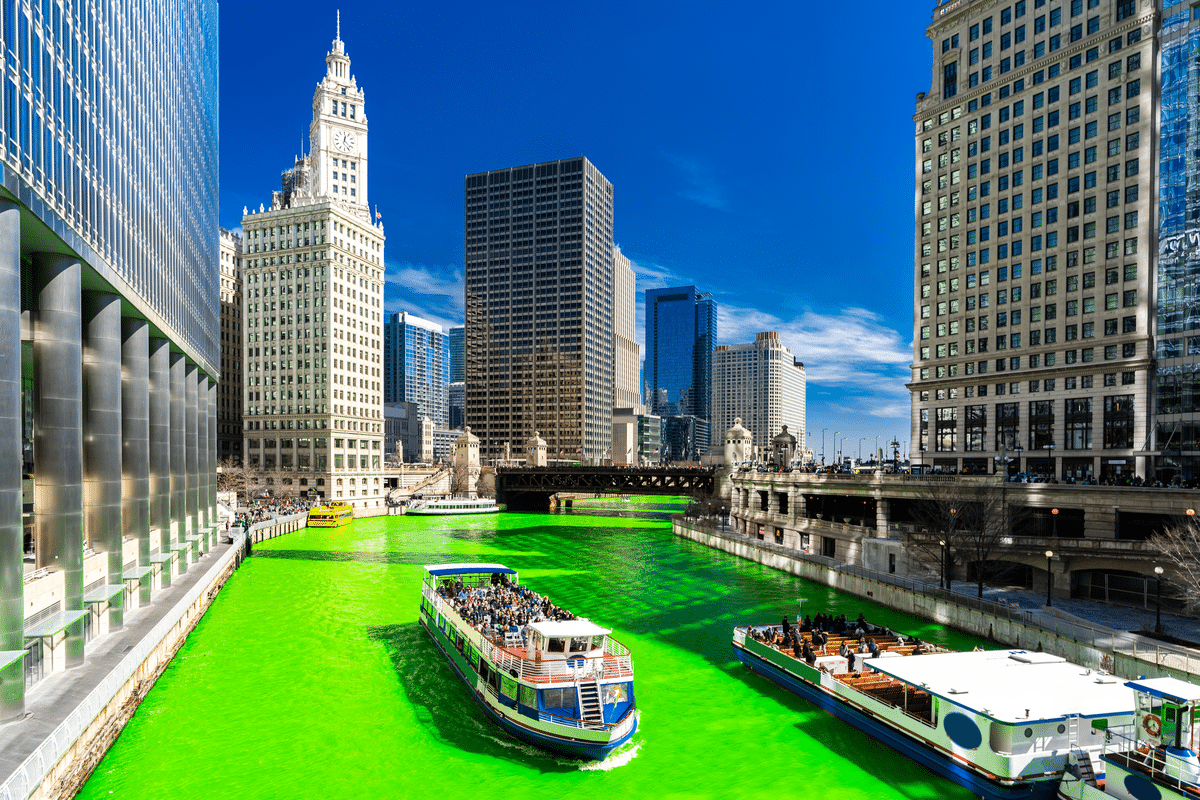Gallery
Photos from events, contest for the best costume, videos from master classes.
 | |
 |  |
 |  |
 |  |
 |  |
 |  |
The Shamrock and St. Patrick’s Day Traditions. On St. Patrick’s Day, people worldwide wear shamrocks, decorate with the green clover, and partake in Irish celebrations. The shamrock is worn on lapels, embroidered onto clothing, and even painted on faces as a tribute to Ireland’s patron saint. St Patrick's Day means green is everywhere. Here's the surprising history of how the color became associated with all things Irish. St. Patrick's Day on March 17th is a time-honored tradition and a fun holiday—but is there more to it than wearing green, drinking beer, and watching parades? In reality, St. Patrick's Day is rich with spiritual meaning as a commemoration of Saint Patrick, a 5th century missionary who converted nearly all of Ireland to Christianity. St. Patrick’s green color meaning. Irish pride and loyalty are not the only reasons you’ll see green on St. Patrick’s Day. The color green also represents Saint Patrick and the island of Ireland. It even has a special place in mythology about leprechauns. St. Patrick’s Day offers a spiritual nudge to reflect on where we’re headed and what we’re being called to do. Taking Action on St. Patrick’s Day. Beyond the parades and parties, one way to honor the spiritual essence of St. Patrick’s Day is through intentional action. Reflect on your life, your own challenges, and how you’ve grown. St. Patrick’s Day, celebrated every March 17th, is associated with the color green, a tradition that has a rich and colorful history. Why we wear green on St. Patrick’s Day: The tradition of wearing green on St. Patrick’s Day is tied to Ireland’s nickname, “The Emerald Isle,” and its green-striped national flag. Green, the dominant color of St. Patrick’s Day, is inextricably linked to Ireland itself. Known as the “Emerald Isle,” Ireland’s lush landscapes, rolling hills, and verdant fields have long been associated with this vibrant hue. A classic icon of Irish culture, Saint Patrick allegedly used the shamrock to explain the Holy Trinity. Thoom / Shutterstock. When we think about St. Patrick's Day, spiritual meaning isn't always the first thing to come to mind. We often celebrate with parades, green attire and festive gatherings — but at its core, it is a deeply spiritual holiday revolving around faith and devotion.. This Green is a big part of St. Patrick’s Day. This color reminds us of Ireland’s beautiful green fields and forests. It also helps us think about nature and how important it is. Many people believe that nature is a gift from God. On St. Patrick’s Day, the color green can make us think about taking care of the Earth. Monday, March 17 is St. Patrick's Day, celebrating all things Irish in the U.S. and around the world. Cities celebrate with parades, bar crawls and more. St. Patrick’s Day is all about fun, laughter, and a bit of Irish luck. Whether you're sharing a message, posting on Instagram, or writing in a card, these short sayings will help you spread the joy of the holiday. So throw on some green, embrace the shenanigans, and let the good times roll. Cheers to a happy and lucky St. Patrick’s Day! On March 17, St. Patrick’s Day brings out a sea of green—worn by both the Irish and the not-so-Irish alike. But have you ever wondered why green is the go-to color for this festive day? And Dressing in green on St. Patrick's can trace its roots to leprechaun legends, as well as a sign of Irish defiance. Each year on St. Patrick’s Day, tens of thousands of Americans add green There are seven symbols that hold special meaning on this day. The St. Patrick’s Day symbols are shamrocks, the color green, leprechauns, parades, corned beef and cabbage, and green beer and the harp. While some of these symbols tie to St. Patrick directly, most correlate more with celebrating Irish culture and showing Irish pride in general. St. Patrick's Day, observed on March 17, has transitioned from a feast day in Ireland to a widely celebrated holiday in the United States. The holiday commemorates St. Patrick, the patron saint of St. Patrick’s Day is a global celebration of Irish culture that takes place annually on March 17, the anniversary of the patron saint of Ireland's death in the fifth century. The holiday has St. Patrick and the Color Green. Legend has it that St. Patrick used the shamrock, a three-leaved plant, to explain the Holy Trinity to the pagan Irish. This story, whether myth or truth, has cemented the shamrock and the color green as central symbols of St. Patrick’s Day. The Color Green and Irish Catholic Identity Have you ever wondered why we wear green, eat yummy food, and celebrate St. Patrick’s Day every March 17? This day is so much more than just shamrocks and leprechauns—it’s a special story about a real person, some cool history, and tons of fun traditions! St. Patrick’s Day usually conjures images of partying, Catholicism, Irish nationalism and, perhaps most famously, the color green: green clothes, green shamrocks, green beer and green rivers. The coastal city of Savannah, Georgia, has staked its claim as the St. Patrick's Day capital of the South, with celebrations dating back to 1812, while Chicago, famed for dyeing its river green since 1962, has been parading since 1843.
Articles and news, personal stories, interviews with experts.
Photos from events, contest for the best costume, videos from master classes.
 | |
 |  |
 |  |
 |  |
 |  |
 |  |